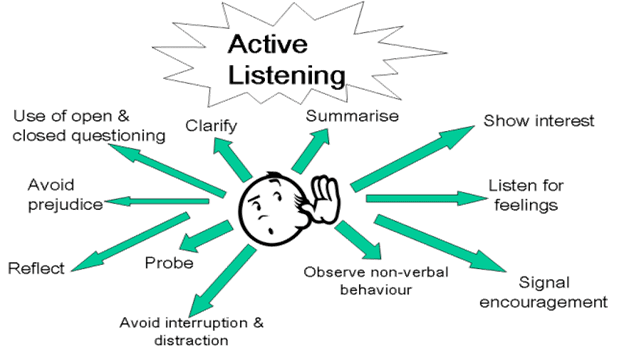Active listening is one of the most valuable communication skills in both personal and professional relationships. Unlike passive listening, active listening involves fully engaging with the speaker, understanding their message, and responding thoughtfully. In today’s fast-paced world, where distractions are abundant, mastering active listening can significantly improve the quality of conversations, build trust, and prevent misunderstandings.
Active listening is not just about hearing the words being spoken but also interpreting emotions, body language, and underlying intentions. It requires a conscious effort to focus entirely on the speaker and show genuine interest in what they have to say.
What is Active Listening?
Active listening is a communication technique that prioritizes understanding over merely replying. It involves giving undivided attention to the speaker, acknowledging their message, and providing feedback that demonstrates comprehension.
This skill is often used by leaders, counselors, negotiators, and professionals in various fields to strengthen relationships and solve conflicts effectively. It is also a crucial component of emotional intelligence, as it helps in understanding the perspectives and feelings of others.
Key Principles of Active Listening
To master active listening, several principles must be observed:
- Focus Entirely on the Speaker: Avoid distractions like checking your phone or thinking about your next response.
- Show Empathy: Try to understand the speaker’s emotions and perspective, not just the words they use.
- Provide Feedback: Use verbal and non-verbal cues such as nodding, maintaining eye contact, or summarizing what you have heard.
- Avoid Interruptions: Allow the speaker to express their thoughts fully before responding.
Active Listening Techniques
1. Paraphrasing and Summarizing
One of the simplest ways to show that you are listening is by paraphrasing or summarizing what the speaker has said. This reassures them that their message is understood and allows for clarification if needed.
2. Asking Open-Ended Questions
Encourage the speaker to share more by asking thoughtful, open-ended questions like “How did that make you feel?” or “What do you think should be done next?” These questions deepen the conversation and show your genuine interest.
3. Reflecting Emotions
Acknowledging the speaker’s emotions is vital. For example, saying “It sounds like you’re feeling frustrated” can help validate their feelings and build trust.
4. Avoiding Premature Judgments
Active listening requires setting aside personal biases and judgments. Listen without forming an opinion until the speaker has finished conveying their thoughts.
5. Using Non-Verbal Communication
Body language, such as maintaining eye contact, leaning slightly forward, or nodding, can indicate that you are engaged. A warm and open posture helps create a positive atmosphere.
Benefits of Active Listening
Active listening strengthens relationships by fostering mutual understanding and respect. It reduces the risk of miscommunication and helps resolve conflicts faster because each party feels heard and valued.
In workplaces, active listening can enhance team collaboration, improve problem-solving, and increase productivity. Employees who feel listened to are often more motivated and engaged.
On a personal level, active listening helps develop deeper connections with friends, family, and partners. It encourages empathy and emotional support, which are crucial for healthy relationships.
Challenges in Practicing Active Listening
While the benefits are clear, active listening can be difficult to practice consistently. Common challenges include:
- Distractions: Smartphones, multitasking, or background noise can disrupt focus.
- Preconceived Notions: Jumping to conclusions or assuming what the speaker is going to say.
- Time Pressure: Feeling rushed may cause you to prioritize speaking over listening.
Overcoming these challenges requires mindfulness, patience, and deliberate practice.
How to Improve Active Listening Skills
Improvement comes with self-awareness and continuous effort. Start by observing your listening habits in conversations. Are you truly focused, or are you thinking about your next response?
Set aside time to practice active listening intentionally. For instance, during meetings or casual conversations, focus entirely on the speaker and use techniques like paraphrasing to show understanding.
It may also help to practice mindfulness or meditation, which can improve concentration and reduce mental distractions.
Conclusion
Active listening is an art that requires attention, empathy, and intention. By mastering this skill, you can transform the quality of your interactions, build trust, and create a stronger connection with others. Whether in personal life or professional settings, the ability to truly listen is a cornerstone of effective communication and leadership.



